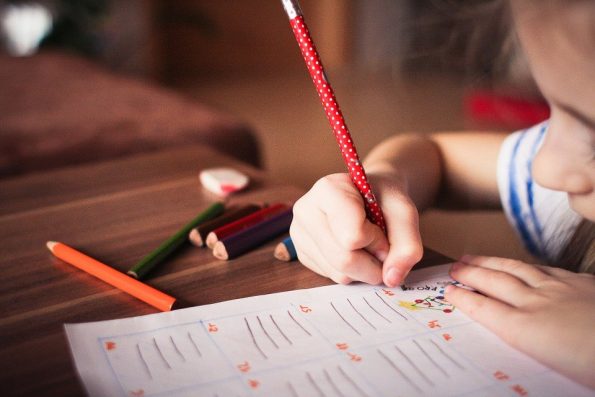Over time, the ways and techniques of conveying education have changed. The categorization of what matters the most and why it matters has also changed drastically. In the past, gaining the capability to read and write was a miraculous achievement spurred by the spirit of innovation.

Later on, reading and writing were only fruitful if learners could also understand and utilize information. At present, education can only achieve its purpose if it triggers creativity and innovation in students. It means changing dynamics and improvements in the way of learning have led to these expectations.
First of all, let’s unravel the concepts of creativity and innovation? For some, creativity is a way of expressing or doing something out of the box. And innovation is the implementation of that unique expression.
Whatever the case, the process of creativity to innovation is all about juggling with thoughts. It is about producing something novel, whether physical or conceptual.
It means the journey to acquire learning is worth it if it can be helpful beyond classrooms and the learners themselves. And for education to achieve such milestones, it needs more exploration and experimentation. Thus teachers should augment their teaching methods and utilize creativity and innovation in teaching.
The following paragraphs explore some of the ways education can inspire creativity and innovation in students.
-
Teach in a practical context
If students cannot understand the significance of education in their daily lives, what is the use of going through the exhaustive academic journey? If teachers can help students observe how education resolves issues of their surroundings, they will try to explore further.
It is why educational degree programs also prepare teachers keeping in view emerging requirements of the field. As such, the master of science online program in educational Leadership focuses on new and creative ways of teaching.
The program develops creative thinkers, observers, innovators, and leaders than mere teachers. If teachers do not learn innovatively and creatively, they cannot teach effectively.
Thus teachers should design their lectures based on education’s contextual significance. It is how students can observe the usage of the course material and knowledge. Context-based teaching will help students to see the benefits of education in reality.
As a result, they will ponder over creative and innovative ways to solve everyday challenges. Otherwise, merely reciting lessons does not prompt or provoke creativity and innovation in students.
-
Engage students in experiments
In reality, every branch of education has space for experiments. Thus engaging students in experiments is one of the ways to spark creative and innovative thinking in them. Playing with metals and chemicals builds students’ scientific concepts.
The more they untangle and observe things around them, the better they can understand concepts. The process of exploration can also help them innovate.
At present, there are a variety of approaches to facilitate experimentation in schools. Teachers can utilize technology and digital tools. Before conducting physical experiments, teachers can use simulated scenarios and help students understand how things work.
As such, websites like zygotebody can help students visualize the entire human body and its organs.
Teachers can teach students how various organs function by zooming in small details. Later on, they can also organize suitable tools and conduct experiments in the laboratory.
This way, students can grasp theoretical concepts more readily. They will also pay attention to the functions of their own body afterward.
-
Encourage students to ask and explore
Asking questions is also an effective exercise to trigger creativity and innovation in students. However, mostly, students hold their misconceptions with themselves. They fear if their questions do not qualify or won’t be replied to.
Sometimes, they do not ask questions even if they do not understand anything at all. This approach eventually kills their creativity and innovative thinking.
Thus teachers should let them know there is nothing wrong with asking whatever bothers them. The school environment should also encourage students’ questions even regarding the most conventional and customary concepts.
If students do not ask, their minds cannot think out of the box, and they will not improve further. Thus teachers and schools should help students untangle their ambiguities. Let them know there is nothing wrong with questioning even proven facts.
Until teachers encourage students to ask and explore for themselves, they will not push their boundaries. If students stumble, teachers should correct them during their exploratory journey. That is how their minds can imagine creatively and innovatively.
-
Organize fitness activities
The mind and body function in coordination and synchronization. If any of the organs of the body experience issues, it puts the entire body in distress. In this regard, fitness is crucial to facilitate and improve the healthy functioning of the body.
Science has also proven that physically and mentally healthy students perform well in their studies. It is because fitness improves brain activity and other physical functions of the human body.
As such, exercise enlarges the hippocampus, increases nerve cells’ interaction, and facilitates the production of new cells. In return, students are more alert and attentive.
Even if exercise, sports, and games are temporarily exhausting, students are the happiest when they have fun and play. In the meantime, a relaxed and blissful mood also creates more space for their minds to wander.
They should incorporate sports and games as an essential part of the learning period. Even more, they should add innovation to fitness activities. The more innovative and challenging the activities, the better students can utilize and discover their abilities. It is how fitness activities can facilitate creativity and innovation in students.
Concluding remarks
Innovation and creativity are valuable traits in students. However, they cannot trigger on their own. To harness these characteristics, students need an environment, practice, and guidance.
Thus mentors, teaching methods, and material need significant improvements. Otherwise, merely sticking to controlled lectures and bookish knowledge cannot help students think creatively.



![Read more about the article [Startup Bharat] This Coimbatore-based cleantech startup is building autonomous bots to clean solar panels](https://blog.digitalsevaa.com/wp-content/uploads/2021/04/Solaviofounders-1617691587571-300x150.jpg)





![Read more about the article [Funding alert] SaaS management platform Zluri raises $10M in Series A led by MassMutual Ventures](https://blog.digitalsevaa.com/wp-content/uploads/2022/01/CopyofImageTaggingNewBrandingEditorialTeamMaster-1641791091985-300x150.jpg)
